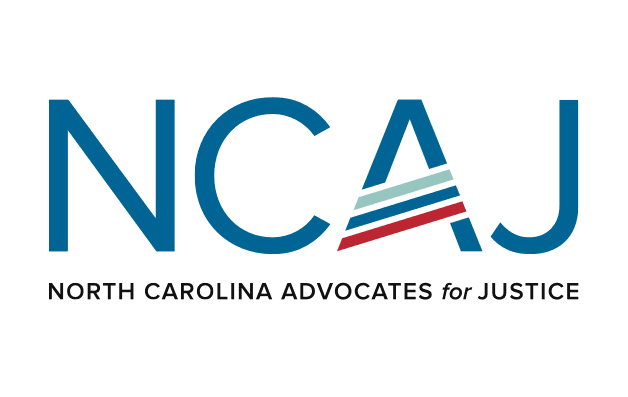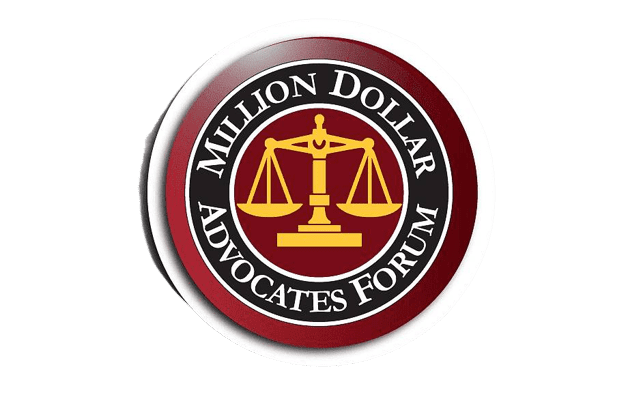

What has two wheels but is invisible?
It is Wake County in the fall. Beautiful autumn days. The roads are teeming with two wheeled vehicles, bicycles and motorcycles. The problem is that people driving cars often do not see bicycles and motorcycles. Even when they do, they often cannot correctly judge their speed. A person on a bike is often invisible to a person in a car.
I. Bicycles –
In 2021 there were 966 pedalcyclist fatalities, accounting for 2.2 percent of all traffic fatalities that year.
In 2021 there was a 1.9-percent increase in pedalcyclists killed (966) from the 948 pedalcyclists killed in 2020.
In 2021 an estimated 41,615 pedalcyclists were injured, a 7-percent increase from 38,886 pedalcyclists injured in 2020.
In 2021 the pedalcyclist fatality rate per 100,000 people was 7 times higher for males than females. The injury rate for pedalcyclists per 100,000 people was 4 times higher for males than for females.
Bicyclists must follow the rules for cars when riding on the road. When riding on a roadway, a bicyclist must ride in the same direction as other traffic. Also, the bicyclist must travel in the right-hand lane and should ride as close as practicable to the right-hand edge of the highway. [§20-146(a)] That means that bicyclists must obey all traffic signs and signals – [§20-158]
Bicyclists must signal their intention to turn by using electrical, mechanical, or manual (arm and hand) signals for left and right turns, and stopping. The signals must begin at least 100 feet before the turn or stop, and continue throughout the turn. Manual signals must be given using the left arm as follows: Left turn – hand and arm horizontal, forefinger pointing. Right turn – hand and arm pointed upward at a ninety-degree angle. Stop – hand and arm pointed downward at a ninety-degree angle. [§20-154(b)]
Sidewalks –
When a bicycle is being driven on a sidewalk, an interesting ambiguity arises in the law. We see above that when they are riding on the road, bicyclists must follow the rules that motor vehicles must follow. But, unless there is a local ordinance (like the Raleigh City Code) which says that sidewalks, either all of them or sometimes only portions of them, cannot be used by bicycles, there is no North Carolina state law which prevents it.
In fact under N.C.G.S. 20-173 (c), we see that “the driver of a vehicle emerging from or entering an alley, building entrance, private road, or driveway shall yield the right-of-way to any pedestrian, or person riding a bicycle, approaching or on any sidewalk or walkway extending across such alley, building entrance, road, or driveway.” However, under North Carolina law, motorized vehicles are not allowed to ride on sidewalks (except crossing alleys, driveway, etc.).
Confused yet –
In the Guide to North Carolina Bicycle and Pedestrian Laws, it states that the North Carolina “General Statutes do not address bicycling on sidewalks. Rather this issue is usually addressed through local ordinances. www.ncdot.gov
Bicycling on sidewalks is sometimes addressed by municipalities with great variation in the extent of the law. Id. For example, with regard to Greenways and Multi-Use Pathways, the Guide states: “Local ordinances may include provisions about bicyclists’ and pedestrians’ use of these facilities; some municipalities require bicyclists to yield to pedestrians on greenways and multi-use pathways. State law does not require bicyclists to ride on greenways and multi-use pathways adjacent to the road.”
For bicycle ordinances in Raleigh, go to library.municode.com/index.aspx?clientId=10312
For bicycle ordinances in Durham go to library.municode.com/index.aspx?clientId=19967
As you can see, there are some sidewalks specifically designated for bicycles to ride upon in Raleigh. But, there is no ordinance in Raleigh or Durham that says you cannot ride a bicycle on sidewalks in general.
Obviously, we need to share the road. But, remember that a bicycle makes a small visual impression on the driver of a car. You have to make them see you, whether it is with flashing lights, reflective gear or by other means. Just as with motorcycles, discussed below, in a fight with a car or truck, you will lose the physical battle. We enjoy the freedom of movement and the feel of fresh air when we ride, but we give up physical safety. As I always tell my daughters, if someone drives their car into you, whether you are on or off your bicycle, they may say they are sorry and that might make them feel better, but sorry does nothing for you!
Insurance –
If you or a family member residing in your home is riding a bicycle when hit by an automobile, the underinsured motorist coverage (UIM) on your car may come into play. For example, if the injury claim’s amount exceeds the amount of automobile insurance coverage on the automobile that hit the bicycle, your underinsured motorist coverage will apply. But, that only happens when you have sufficient UIM coverage. Therefore, it is important to be properly insured. Speak with your auto insurance agent about how much underinsured (UIM) coverage you have on your policy. You may be surprised how inexpensive it is on a yearly basis to carry as much as One Million Dollars in UIM (often less than a dollar a day).
II. Motorcycles –
In theory, motorcyclists (which I will call bikers) should be treated the same as car drivers on the road. I have been driving motorized bikes for 30 years and I can tell you nothing is further from the truth.
Evolution of the Biker –
In the 1940’s and early 50’s, motorcycles became very popular after veterans returned from WWII. They often brought parts or even whole bikes from overseas. They would modify them, sometimes stripping (chopping) them down to a frame, wheels, and an engine. It provided a sense of freedom and independence, which they craved after serving their country. There is a fraternity among bikers. When a biker sees another biker on the side of the road in need of help, chances are they will stop. With the advent of smartphones, people rarely stop to help strangers anymore. The thought being, they have a handheld computer, they will be fine.
Somewhere after Marlon Brando in the Wild One, Peter Fonda in Easy Rider, and various TV shows and movies, people have developed a mindset about bikers. Rarely do they have a fair or accurate image of bikers. In fact, most bikers these days are hardworking, productive members of society. It may surprise you that the average Harley Davidson rider is 47 years old, with an average income of $90,000.
But, if a biker gets hurt in a wreck, at no fault of their own, if it ends in a trial, you can often hear a typical juror say they did something wrong just by getting on a motorcycle. As I have discussed in previous newsletters and on my website, North Carolina is a “contributory negligence” state. This means, that if the other driver’s insurance company can come up with a theory by which the innocent victim contributed in any way to their injury, they will flat out deny the claim. Sound unfair? You bet.
Biker Safety –
In 2021 there were 5,932 motorcyclists killed, 14 percent of all traffic fatalities. This is the highest number of motorcyclists killed since FARS started data collection in 1975. The number of motorcyclist fatalities in 2021 increased by 8 percent from 2020, from 5,506 to 5,932. An estimated 82,686 motorcyclists were injured in 2021, a 5-percent increase from 78,944 motorcyclists injured in 2020. Per vehicle miles traveled in 2021, the fatality rate for.
For example, I pay about $400 a year to insure my bike, which is now worth about $15,000. But, for an additional $100 or $200, a year, I can get One Million Dollars in UIM, or underinsured motorist coverage. Two things make no sense, the first being that it costs far more to insure a replaceable inanimate object than a person, and the second, that when I talk to my biker friends or strangers at rallies, they have no clue what their coverage is or that they can essentially get a Million Dollars in life insurance to help their family, for a couple of hundred bucks!
Many “biker vs. car” crashes occur when the biker is traveling straight and the car wants to make a left turn. The car driver tries to gauge the speed of the bike. Because of the small visual silhouette made by the bike, the car underestimates the speed of the bike and the amount of time that they have to make the turn. As a result, the car turns, cuts off the entire road and the biker has nowhere to go.
Helmets-
North Carolina may pass a new law which will allow adults not to wear helmets when riding motorcycles, if they so choose. I wear a full face helmet and protective gear when I ride. But, whether a biker does or does not wear protective gear, we all need to carry enough insurance to protect our families in case we get hurt. I carry One Million Dollars in UIM on my motorcycle. If I am killed as a result of someone else’s negligence, my family would, in essence, be protected by what amounts to a Million Dollar life insurance policy (at the cost of only a couple of hundred dollars a year in premiums).
Here are some tips on how to stay visible from a Motorcycle Safety Foundation Handbook:
Many motorcycle crashes are a result of a motorist not seeing a motorcyclist until it is too late. Motorcycles are smaller and not as prevalent as cars and trucks, so they are more difficult to pick out in traffic and their speed may be difficult for others to judge. You must assume the responsibility to be visible in traffic. You must communicate your presence and intentions to other highway users. Here are some suggestions for becoming more visible to others:
Clothing: Wear bright colored clothing and a light colored helmet. Use reflective material on your clothing, helmet, and motorcycle.
Headlight: Ride with the headlight on during the daytime.
Signals: Communicate with other drivers by signaling intentions. Remember to cancel your turn signals. A false signal can create a conflict because it fails to accurately communicate intentions.
Brake Light: A flashing brake light is more visible than a steady one. Flash the brake light before and during stops (except of course for emergency stops).
Horn: Use the horn to gain attention, but don’t rely on it. Many car and truck drivers may not be able to hear it.
www.msf-usa.org/curriculummaterials/brc_handbook_vs71_noprint.pdf
In Conclusion-
As motorists, we need to be aware of other drivers on the road. Keep your eyes out for bicycles and motorcycles this fall. They are there and they are not invisible. As bicyclists and bikers, we need to make ourselves easier to be seen. We need to protect ourselves. If you are in the Research Triangle area, call me at (919) 785-9922. Please be safe out there.
-Your friend, Patrick


